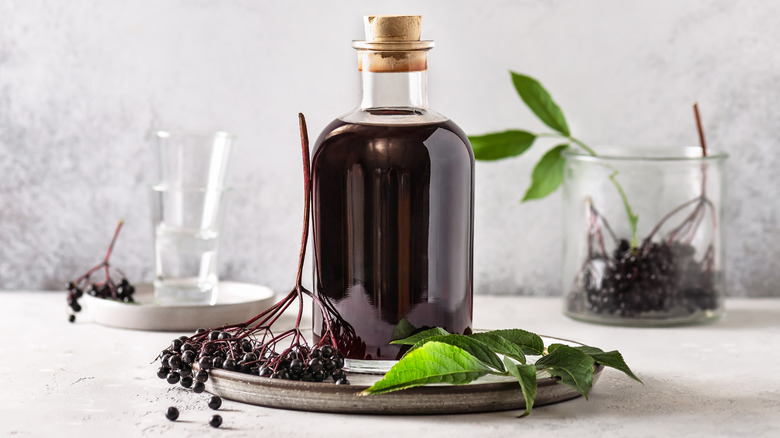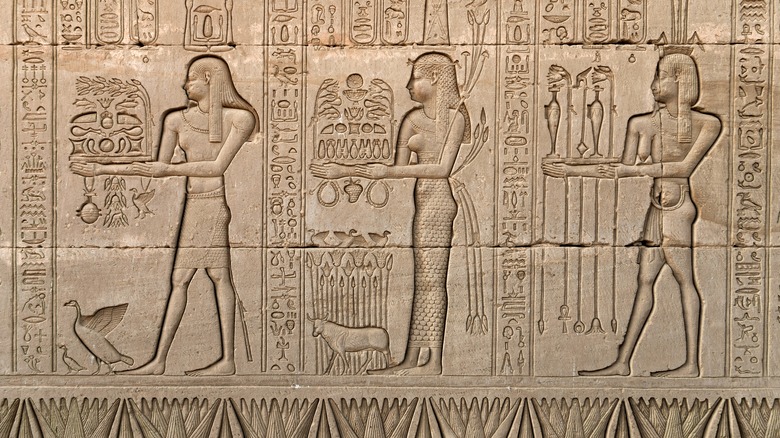How Herbal Wine Was Made In Ancient Egypt
Modern foodies have ancient Egypt to thank for pie filling and sourdough. According to a groundbreaking archaeological dig in 2009, we also have them to thank for herbal wine. As published in the Proceedings of the National Academy of Sciences, researchers excavated the tomb of Scorpion I (one of the first rulers in Egyptian history) in Abydos, a region in Upper Egypt, and found about 700 jars that once contained herbal wine.
In ancient Egypt, wine was a luxury item, but it was so culturally significant that it was accessible to elite and common people alike. Egyptian herbal wine was so prized that it was even traded with other neighboring civilizations and offered to the goddess Hathor. The Egyptians established vineyards along the Nile River and cultivated a deep appreciation for wine, considering it an elixir with both physical and spiritual benefits. Winemaking was a well-established trade, and the ancient Egyptians revered the production of wine as an art form.
Beyond this (or perhaps, as an extension of it), physicians were using grape-based herbal wine to treat ailments; it was for medicinal purposes over recreational enjoyment. In ancient Egyptian winemaking, the grapes were harvested and crushed in tall, narrow clay jars called amphorae. The fruit was fermented via natural yeasts present on the grapes' skin, sweetened with honey, and the herbs were ostensibly added after fermentation but before the jar was sealed.
Centuries-old sommeliers were infusing like pros
The researchers discovered the herbal wine traces using liquid chromatography tandem mass spectrometry, a technique that can detect chemical signatures. Per the findings, ancient Egyptians were brewing herbal-infused wine as early as 3150 B.C.E. The earliest written evidence of these proto-mixologists infusing herbs into their wine comes from papyrus records from 1850 B.C. It is thanks to those papyri that historians understand this ancient peoples' relationship to the wine they were producing.
When fruit-bearing trees first began growing roughly 100 million years ago, humans were suddenly granted access to sugar and ethanol — both of which are essential for winemaking. It's unclear exactly which ailments they considered herbal wine to be a cure for, but the ancient Egyptians likely realized that infusing plants with medicinal properties in some sort of alcohol acts as a natural preservative and also lends to higher potency and more thorough dissolution than with water as the medium.
So, did it taste any good, or was ancient Egyptian herbal wine a pucker-inducing utility only? The medicinal alcohol vessels contained trace compounds of pine tree resin, senna, coriander, mint, sage, rosemary, thyme, celery, onion, garlic, frankincense, myrrh, terebinth, bryony, cumin, dill, aloe, wormwood, and hyssop. Considering these ingredients, the wine probably tasted similar to a bitter Italian amaro or woody Dominican mamajuana. It could have also run more spiced, fiery, and herbaceous, comparable to modern liqueurs like Fernet and Underberg.

